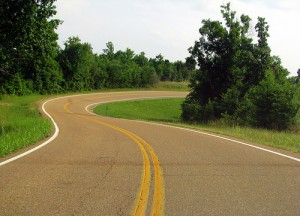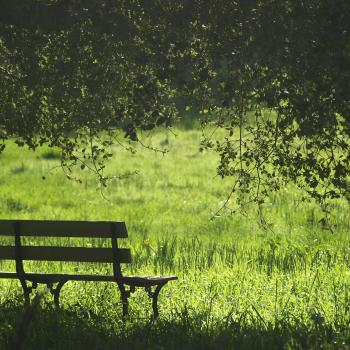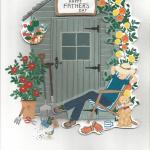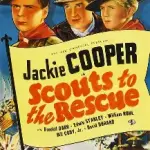 Today Good Letters welcomes back former blogger Dyana Herron as a regular contributor. Dyana is a poet who holds an MFA in Creative Writing from Seattle Pacific University. She served as SPU’s MFA Program Coordinator and Development Associate for Image Journal before relocating to Philadelphia with her husband last year. We are glad to share her words with you once again.
Today Good Letters welcomes back former blogger Dyana Herron as a regular contributor. Dyana is a poet who holds an MFA in Creative Writing from Seattle Pacific University. She served as SPU’s MFA Program Coordinator and Development Associate for Image Journal before relocating to Philadelphia with her husband last year. We are glad to share her words with you once again.
Since I retired as a regular contributor to Good Letters almost exactly one year ago, I’ve moved from Seattle to Philadelphia. Neither are cities I expected to live in before I had sudden reason to live in them. Living in a city at all, in fact, was never necessarily the plan.
Why, then, do I find it a shock each time I go back home to Southeast Tennessee, where my family still resides? Why, standing in the muggy July air I know the feel of as well as the feel of my own body, looking on the hills whose shape I know as intimately as the geography of my father’s face—even in the dark—do I feel so strange, so out of place?
I have been in Tennessee for the past two weeks, attending my dying grandmother, Gennie Vee.
When I say attending, I mean I have been assisting in small ways with her care—sitting with her, stealing extra cups of applesauce from the kitchen of the rehab facility she stayed at for a week to regain strength after a hospitalization, helping her find which channel is broadcasting the Braves game.
But more than that, I am attending my grandmother the way I might attend a lecture, a concert, or a church service. When I say I am attending her, I mean I am paying attention, as I would at any of those events.
And my grandmother, though she does little now but eat and sleep and laugh and tell me she loves me and struggle to breathe, is at the same time teaching me something complicated, and singing me something beautiful, and telling me something I didn’t know about God.
The first week my grandmother was in the rehab facility wasn’t as bad as I feared. It was a cheerful enough place, with a small vegetable garden outside the cafeteria and a daily activity schedule that not only included Bingo and I Love Lucy marathons, but also poker, aromatherapy, Beading with Mildred, and the mysteriously-named but probably super fun Lula Tells It All!
I’d been nervous in advance that being there would make me sad. Besides seeing my grandmother in worsening health, I worried that seeing other elderly patients—many without families to visit them, and many lost in their memories of the past without much future to look forward to—would be hard to handle.
When I arrived, though, I found that I enjoyed sitting in her room, listening to the whir of the oxygen machine, swapping stories with other family members who came to bring food and books and check in on her.
I was most anxious when she decided she wanted to return home. While she was still in the rehab facility, I realized, she was working towards a goal—regaining enough strength to go home. But after she went home, the future point she’d be moving toward was her death.
Of course home was where my grandmother wanted to be. She and my grandfather (dead fifteen years now) built the house together and raised seven children there—six have houses of their own on the same road.
She wanted—wants—to rest her head on her own pillows and look out her own windows and breathe her own air, which smells like bacon grease and tomatoes.
Although my grandmother’s house is only a short and uncomplicated drive from my mother’s, when going to visit her I find myself taking the longer, sinuous back roads: Gap Springs Road, Buck’s Pocket Road, Samples Chapel Road.
I was surprised by the ease with which I remembered how to steer around bends and sharp turns, and how, without thinking, I’d swerve to bypass an old pothole or dip. This muscle memory is accompanied by actual memory.
I pass the house that belongs to my first grade teacher, in whose garage I accidentally locked myself once while selling Girl Scout cookies. Later the road winds by the house my aunt and uncle rented early in their marriage.
I remember, when very small, bringing them a pair of crocheted baby booties when my aunt was first pregnant, only to find her crying in her living room chair. My mom explained later that there wouldn’t be a baby anymore. That maybe there would be later, but not then.
Finally the road curves through a long corridor of trees so tall and dense they block out light. I dream of this wooded strip so often it feels surreal to be present in it in reality. The shady darkness—especially in evening— doesn’t help matters, nor do the fireflies’ sleepy blinks in the brush, green on green.
Here’s the hard part. We aren’t taught how to go back.
We’re taught to move forward, toward something better, as quickly and efficiently as we can. We’re told there will be a road, and even if it is narrow, it is straight, and it will take us where we need to go.
We are told a story has a beginning, a middle, and end—that stories move in some kind of line. In this way we are taught to move from one place to another, and to yet another.
In reality, though, it’s rarely so simple. Our stories are convoluted, and winding, and often lack resolution. We are frustrated and baffled by them. We know what to do when a baby is coming, but not when the baby doesn’t come. We know how to help people recover, but not how to help them not recover.
For me, for now, taking the back roads feels truer to the way life moves—forward and back and around, and sometimes all this at once. For me, for now, this seems like the right way to go.
When I pull into my grandmother’s driveway, there is a light in the window. It illuminates her curtains, printed with roses. They are faded from many years of filtering sunlight.










